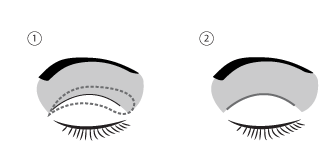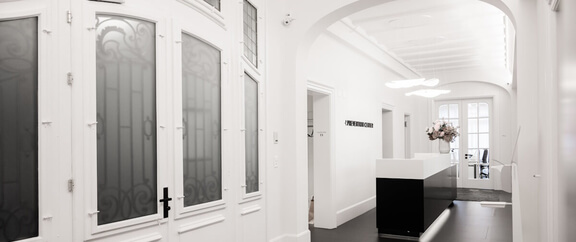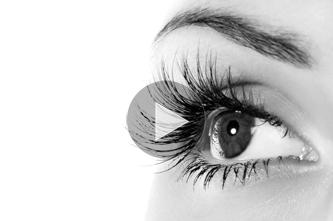Facts on Upper Eyelid Lift
| Medical term | Upper Eyelid Blepharoplasty |
|---|---|
| Who | men and women |
| Treatment | outpatient |
| Anaesthesia | local anaesthetics |
| Down time | 7 days |
| Prices | CHF 3'500: Upper Eyelid Surgery |
A tightening of the upper eyelid is a common surgical procedure that is used to aesthetically modify loose and sagging upper eyelids. Excess skin on the upper eyelids often leads to eyelids that droop so much that the eyelid is increasingly obscured by skin tissue and the peripheral vision of the patient may be affected - in these cases blepharoplasty is no longer just a cosmetic procedure.
The change in skin elasticity on the upper eyelids is usually due to the natural and inevitable processes of ageing. Other factors, however, such as excessive sun exposure and long-term sleep deprivation can also have a negative effect on skin texture and elasticity of the eyelids.
Before the upper eyelid blepharoplasty
Every operation is preceded by a comprehensive and thorough consultation to find out if it is safe for a patient to undergo the procedure, based on the individual's medical and surgical histories. During the consultation, the correction requests and the appropriate course of treatment will be discussed in detail.
In order not to jeopardize the healing process after an upper eyelid surgery, smokers are asked to refrain from using nicotine for fourteen days before the date of the operation. As blood thinning drugs, such as aspirin and warfarin may increase the risk of bleeding during surgery, the preoperative use of such medications should be clarified beforehand with the medical team.
The surgery
A surgical upper eyelid surgery is usually carried out under local anesthetic. At the start of the treatment, the surgeon first identifies the section of skin tissue to be removed. A surgical incision is then made, which mostly runs along the natural crease of the eyelid. When the incision is healed after successful surgery, the scar will hardly be noticeable because of its position in the crease. Then, the excess skin is carefully removed and sometimes the resident eye muscles are also corrected, which prevents the eyebrows from being fixed in an artificial position. The eyebrow is attached to the periosteum in the course of the operation; a procedure that is called a browpexy. If the flesh of the upper eyelid is scheduled to be removed, the cut edges are skilfully sewn together with a fine suture material. This is how the firming effect of the treatment is achieved.

After the surgery
Immediately after operation, the eyelid is cooled. This measure reduces the likelihood of any swelling or bruising. Occasionally, the short-term application of an inconspicuous tape is deemed to be advantageous. The removal of this medical tape is usually possible as early as four days after the corrective surgery.
Clients are prohibited from driving for twenty four hours after the operation, so clients treated as outpatients should arrange for someone to collect them after the procedure.
To promote the healing process, and the maintain the success of the surgery, customers should look after themselves with special care for the first few days after surgery. Strong head movements and strong sunlight should particularly be avoided.
The perfect result
For most clients, an eye-lift causes a significant aesthetic improvement. Any visible side-effects, such as slight swelling, have usually subsided by a few weeks after the surgery. The success of the treatment can be finally judged a few months later.
Even after successful surgery, excess skin and fat can reoccur in the same upper eyelid area over the course of the next few years or decades. If this happens, re-corrective action is usually a possibility.
Risks & side effects
Severe pain rarely follows eyelid surgery, but swelling and bruising of the eye area may last for a few weeks. Occasionally, there may be a temporary feeling of tightness in the face after the procedure. Although eye injuries resulting from upper eyelid surgery are very rare, they can not be completely ruled out. Lastly, other possible risks of eyelid surgery are impaired wound healing that results in an unsightly scarring, infection, functional impairment, and allergic reactions.
Before & After Pictures
Contact

PREVENTION-CENTER AG UTOSCHLOSS
Utoquai 31
8008 Zürich
How to get there
PREVENTION-CENTER AG ZUG
Aabachstrasse 8
6300 Zug
How to get there
PREVENTION-CENTER AG BERN
Kornhausplatz 7
3011 Bern
How to get there
VISITING HOURS
| MO - FR | 8 AM - 6 PM |
OVER THE PHONE
| MO - FR | 8 AM - 5 PM |
















